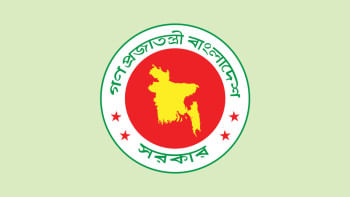Gift of prophecy: Khona's origin story in Bangla folklore

Khona, the mythical lady of ancient Bengal was as keen and clever as her prophecies, or so history depicts her to be. She still lives on in our hearts as a mystery that is enshrined by folklore.
But who was she actually? And what is her story?
Books tend to describe that there are many versions to Khona's story, the most popular being the distressing story from twelfth century Gupta period. And snippets of the story go as follows:
There was once a famous astrologer and mathematician in the later years of the Gupta period living in Ujjain by the name of Boroha Mihira (Varaha Mihira). Boroha was a key member in the royal court of king Bikram Aditya (Vikram Aditya). The famous astrologer's wife gave birth to a son with an inauspicious lifeline. His father, the famous Boroha sketched the little boy's horoscope and was astounded by it. The ill-fated boy was supposed to die within the year.
In order to prevent the ill-fated forecast Boroha concocted a plan, which forced him to abandon his one and only child inside a vessel and let it flow down with the river. The child was later recued in Sinhala (today's Sri Lanka) and raised by the king of the nation. He later grew up in the Sinhalese royal court and married the daughter of the king (Khona). Later they travelled together, back to Ujjain, to re-unite with Boroha.
One day in the royal court of Bikram Aditya, Khona defeated her father-in-law in a debate, hurting his ego tremendously. This is when Boroha ordered his son to cut the tongue of his wife, to which he heeded, and Khona as a result of the atrocity, succumbed to her wounds and died.

While the story has millions of loose threads which forces it to qualify as folklore, we cannot but take archaeology into consideration. Strangely enough there are actual ruins (mounds of Khona-Mihir) 40 km northeast of Kolkata, in a place called Deulia, near Berachampa, Barasat. Archeologists says the specific site dates back to times as early as third century B.C. —somewhere between the times of the Maurya and Gupta dynasty.
The bewildering mix of these folk tales keep us inspired till now. Was the mound the burial place of the legendary Khona? Or was it simply an observatory challenging the archaic mindsets of the Gupta people including her father in law's?
Some contexts portray her story to be more political. Since most of her adages are related to agriculture, few depict her to be an emblem of the village farmers. The story of her tongue being cut construed from the fact that the farmers did not have much say in worldly matters, even though they were experienced enough to concoct valuable prophecies that mattered everywhere from daily lives to the world of cultivation and farming.
Few others say that Khona actually lived and was a mouth piece for the illiterate farmers of ancient Bengal, and voiced out their concerns when required. Class conflict was the major reason that caused enragement in the royal courts. In addition to that male chauvinism had a huge part to play which ultimately encouraged the livid members of the court to order for her execution.
Whatever the story maybe, the mystery still remains vast. And maybe the 'butchery part' has a strong association; maybe history simply wanted Khona's identity to remain 'hidden' forever.

 For all latest news, follow The Daily Star's Google News channel.
For all latest news, follow The Daily Star's Google News channel. 








Comments